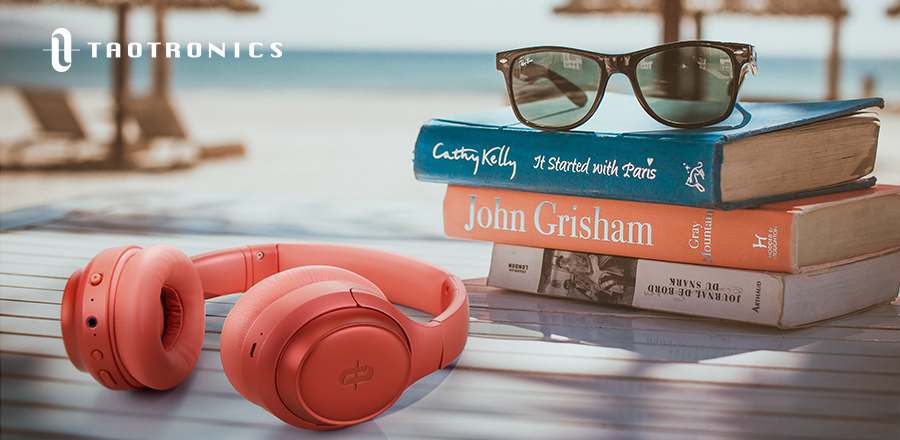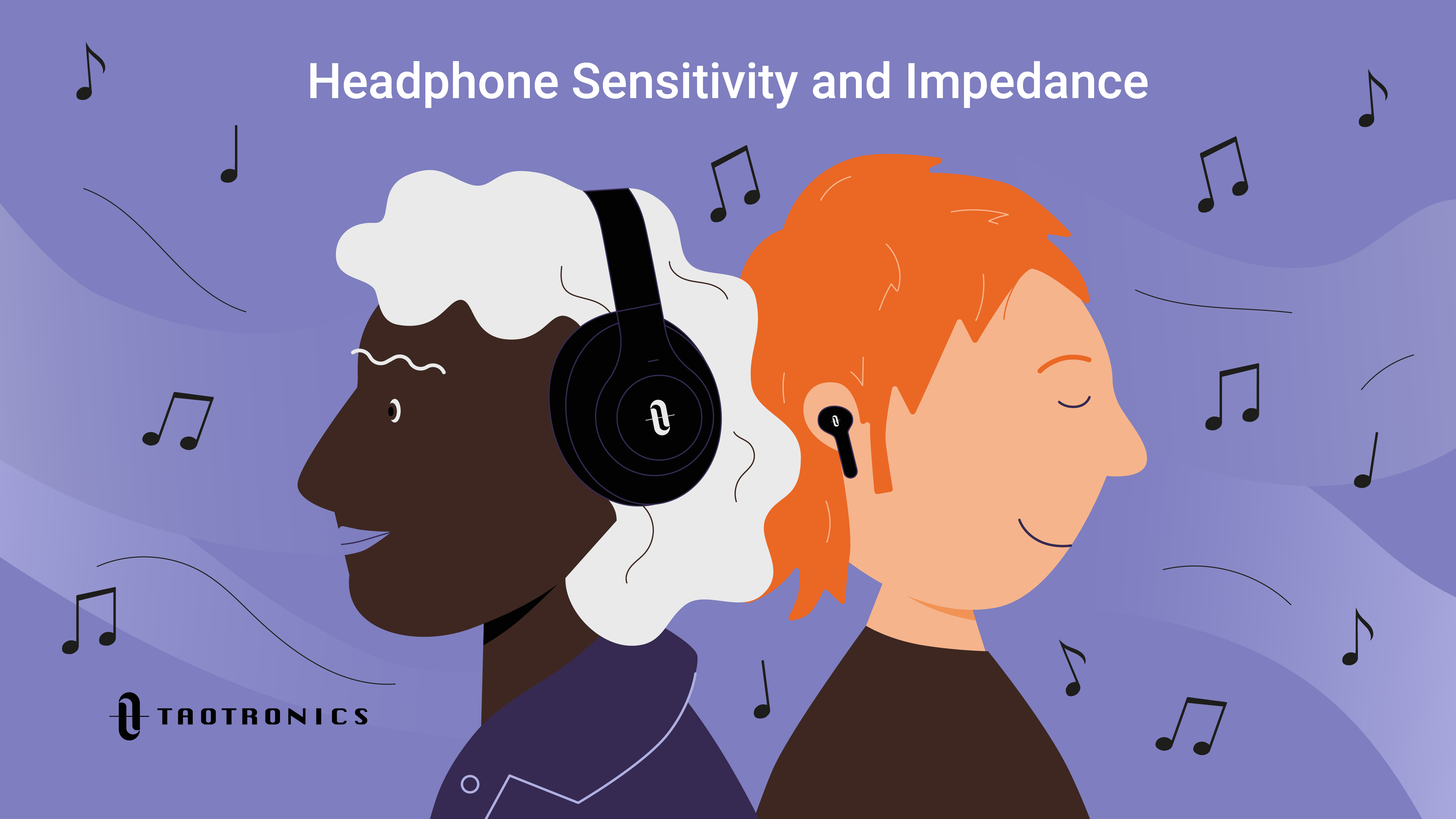Have you ever heard of headphone sensitivity or headphone impedance? If you haven’t, we explain why it is worth knowing about and how to calculate the sensitivity and impedance of your headphones!
Headphones are pretty easy to grasp, right? Connect them to the device that plays audio and listen to your hearts content. Simple!
There are things to know that will make your listening experience better. One of these is headphone impedance and sensitivity. While this isn’t something necessarily listed on websites by manufacturers, and isn’t something people usually discuss in casual conversation, learning about it could make a real difference to your audio experience. It could also save you money—no need to splash out on expensive headphones with high impedance if you’re only using them for casual listening while connected to your smartphone!
In this blog, we will explain about headphone impedance and sensitivity, as well as offer a headphone sensitivity comparison and a headphone sensitivity calculator. Read on to find out what device your headphones sound best with!
What is Headphone Sensitivity?
Headphone sensitivity relates to how loud your headphones will play audio at a given power level. If your headphones have greater sensitivity, they will be louder than headphones with a lower sensitivity, if both headphones play audio from the same device. This could be from a smartphone, laptop, and so on.
This isn’t a particularly complex idea, but to know about headphone sensitivity you have to know about one thing: Headphone impedance.
Headphone Impedance
Essentially, impedance is how well your headphones can resist an electrical current. Measured in Ohms (Ω), you can use this to find out how much power your headphones need to be able to play your music at a greater volume. It makes the difference about being able to play your music at a low volume on your phone or playing it at full volume.
The more Ω, or the higher the number, then the more power your headphones need. You might need to have them plugged into an amp rather than a smartphone to hear the music properly and with an immersive feeling.
What is a Safe Range of Headphone Sensitivity?

As headphone sensitivity is measuring volume at certain power, you also need to check it in decibels.
75dB would be on the low end of the scale—that’s the equivalent of a car passing you at 65mph around 25 feet away. This might even be a lot for you; Iac Acoustics explains that the “Upper 70s are annoyingly loud to some people.”
110dB would be on the high end of the scale. Iac Acoustics says that this is similar to live music at a rock concert! You should only listen to music this loud for around 15 minutes.
Read more about how listening at high volumes can be bad for your ear health.
Reporting Sensitivity
Sensitivity is quite hard to measure because different manufacturers not only have different measures, but also don’t always report it in the same way.
Two key ways to report it are listed below. Make sure the units are listed, so you don’t make an assumption either way.
dB/V (Sensitivity)
If sensitivity is reported like this, it is explaining how loud the headphones are with a given output voltage. You will see the dB/V as a whole number, and it is becoming the new standard. This makes it quite easy to directly compare headphones sensitivity.
dB/mW (Efficiency)
Again, this is easy to compare—but only as long as the impedance is the same in the measurements you are comparing. If the impedance is different, you might have to do some extra math! You can convert it to dB/V then you will have an easier way to directly compare.
This measurement tells you how much voltage is needed to achieve 1mW of power. (Watts is volts*amps, if that helps at all.) If you have a higher dB/mW at 100 ohms, then it will play louder than headphones with a lower dB/mW.
The Importance of Headphone Sensitivity

So, why is sensitivity a more useful measure than efficiency?
Well… they’re kind of the same thing. At least, you can get an answer from both measurements if knowing about the volume of your audio is important to you.
Sensitivity will be important to you if you are connecting using a smartphone, because more sensitive headphones will be able to play the music at a decent volume level (we all know the headphones that you buy cheap at the store never sound as great, or as loud!)
Basic Rules for Checking Headphones Sensitivity
Headphones with different levels of sensitivity suit different situations. The following levels are a guide to helping you choose the ones that are right for you, depending on the circumstances you will use the headphones the most in.
- 32 Ohm and 99dB/mW or more: Usually the most affordable headphones, these are moderately loud and good for casual listeners.
- 32-80 Ohm and 96dB/mW or more: Best for use with desktop computers, laptops and so on.
- 32-80 Ohm and less than 96dB/mW: These are low on ohm and also quiet, so unless you enjoy listening to quieter audio then you might need an amplifier.
If you need more information, check out this video from In the Mix on YouTube.
Is it Better to Buy Headphones with High Sensitivity and Impedance?
For some people, this factor will be a big decider in the make and model of headphones they buy. This section will help you understand if you need to take headphone impedance and sensitivity into account.
- Lower vs. higher headphone sensitivity: The higher the sensitivity, the louder the headphones are. However, this doesn’t automatically mean that you need high sensitivity, as you will only be using your headphones at a safe volume. So, for example, 100dB could be perfectly adequate for headphone usage. Headphones with high sensitivity will also pick up everything, including audio squeaks and hisses.
- Lower vs. higher headphone impedance: If you are listening to music from a smartphone, you need to get headphones with lower impedance (around 32 ohm). If it has a high impedance, it will still sound quiet even at full volume. On the other hand, if you are using professional equipment then high impedance headphones will provide better audio.
Ultimately, a lower impedance and moderate sensitivity is the best headphone combination for the average listener.
How to Measure your Headphones Sensitivity?

A lot of manufacturers will list the sensitivity or efficiency of headphones on their pages. If they just list the efficiency, you can convert it into sensitivity in the following way:
SV = SP + 20•Log(sqrt(1000/Z))
Where:
SV is the voltage sensitivity in dB SPL/V(RMS)
SP is the power sensitivity (efficiency) in dB SPL/mW
Z is the impedance of the headphones in Ω
Conclusion
Headphone sensitivity might not be the first thing you look for when you buy a new pair, but it is worth thinking about if you want headphones that will play at a higher volume with a lower power source. You can make a headphone sensitivity comparison and check before you buy, if this is listed on a manufacturer’s website. Alternatively, you can calculate it from the efficiency (or just Google the specific pair and see if this information is listed anywhere).
Check out the TaoTronics full headphone range today!
- Celebrate Labor Day: Discounts from TaoTronics - April 23, 2021
- How to Connect Bluetooth Headphones to Your Macbook Pro or iMac - April 9, 2021
- Headphone Earpads Full Guide: Replacements, Covers, and more! - March 26, 2021
